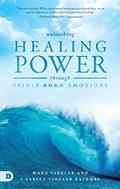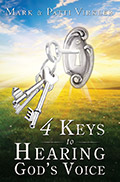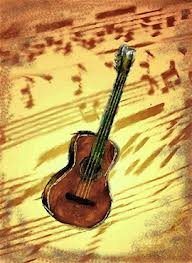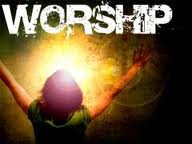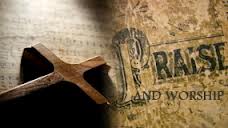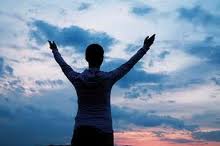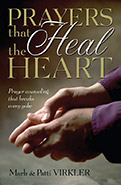The Feasts and Festivals of the Lord
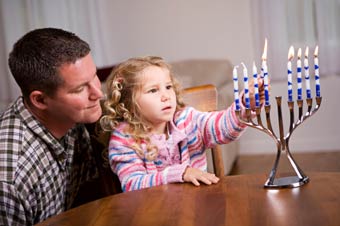
There are significant feasts and festivals of the Lord that are to be honored or celebrated by the Jews. During the celebration they are to worship God and Moses proclaimed these observance of the Lord as holy, scheduled at specific times in the annual Jewish calendar. These holy days of the Lord were both of public and religious in nature.
Some of these regale and celebration of the Lord marked the beginning or the end of the agricultural year, while others commemorated historic events in the life of the nation.
All of the commemoration were marked by thanksgiving with music, dancing and joyous feasting.
What are these feasts and festivals of the Lord and why is it so significant that the Lord should make it a lasting ordinance. From my viewpoint, they were meaningful and always pointed to The Almighty God and often had prophetic and Messianic significance.
There are nine of these feasts, seven mentioned in Leviticus 23, plus Chanukah and Purim. The Hebrew word for "pilgrimage" seems to be reserved mostly for the three great annual banquet: the Feast of Unleavened Bread, the Feast of Weeks, and the Feast of Tabernacles.
Every Israelite male was expected to observe them. The religious pilgrimage from the various towns and cities to the Temple or to the Levitical Cities scattered throughout the land became annual events.
This yearly event may also have progressed from an annual "pilgrimage" early in Israel’s history to a "processional" at the Temple or at the Levitical center in later times. In all the feasts and festivals of the Lord, the nation of Israel remembered its past and renewed its faith in the Lord who created and sustained His people.
Lets explore God's Word and see how it relates to every believer in Christ. These feasts and festivals of the Lord are still practiced today by the Jews.
The Feast of the Sabbath
An existing recurring feast that is to be obeyed thoughout the whole year on every 7th day.
That day is to be set aside as a day of worship and rest, remembering and celebrating the finished work of God in creation. (Gen 2:2-3) Christians observe the 1st day of the week or the day our Lord arose from the grave (Luke 24:1, Acts 20:7, 1 Corinthians 16:2). Therefore we celebrate the finished work of redemption.
The Hebrew word for Sabbath means to cease or abstain.
Two reasons are given for observing the Sabbath: Creation and Exodus.
Exodus 20:8-11 reminded the nation of Israel to remember that God rested on the seventh day (Gen. 2:2). This grounds the observance of the Sabbath in the creation of the world. Deuteronomy 5:12-15 reminded Israel to remember its bondage years when there was no rest.
This passage fixed the origin of the Sabbath in the bondage of the Hebrews in Egypt. The Israelites were instructed to include the family, the hired servants, the stranger, and even their domestic animals in observance of this holy day.
All were commanded to cease from normal labor. This included the command not to gather firewood (Num. 15:32-36) or to kindle a fire (Ex. 35:2-3). Stoning to death was apparently the penalty for gathering firewood on the Sabbath. Those who violated the Sabbath would be ex-communicated from the community or could be put to death (Ex. 31:12-16).
The Sabbath became not only a day of rest but a convocation to the Lord as well. A specific sacrifice on the Sabbath is required in Numbers 28:9-10. It included a lamb, a grain offering mixed with oil, and a drink offering. This was to be offered as a burnt offering.
In later periods, prayer and other rituals became the procedure for observing the Sabbath. The purpose of the Sabbath was twofold. It symbolized that the nation of Israel had been setapart by the Lord as His special people. The Sabbath was also a celebration of the fact that the land belonged to God. This is seen in His provision of a Sabbatical Year-one year out of every seven when the land should rest from cultivation in order to renew and replenish itself.
The observance of the Sabbath set the Israelites apart from their neighbors. Unfortunately, burdensome restrictions and heavy requirements eventually grew up around its observance.The day that was set apart for rest, renewal, and worship became a day filled with rules of many things that must not be done.
Jesus attempted to restore the purpose of the Sabbath (Matt. 12:1-14; Mark 2:23-3:6; Luke 6:1-11). He declared God’s intention for the Sabbath by pointing out that "the Sabbath was made for man, and not man for the Sabbath" (Mark 2:27).
The Feast of the Passover (Pesach)
Date in Hebrew calender is 14th of Nisan (March - April).
The first of 7 Biblically mandated feasts. Jews made their way to Jerusalem to celebrate a great service of worship to God. It lasted one day. It has been celebrated thousands of years.Jesus (Yeshua) was celebrating the Passover with his disciples on the night of the Last supper.
Passover celebrates God's deliverance of His people, Israel, from the 10th plague in Egypt - the killing of the firstborn. Each Jewish family applied the blood of a lambto the doorposts of their home, and the angel of death "passed over" their homes sparing them from the plague. The severity of this last plague caused Pharaoh to let them go from Egypt.
It was on the evening of this day that Israel left Egypt in haste. Unleavened bread was used in the celebration because this showed that the people had no time to put leaven in their bread as they ate their final meal as slaves in Egypt.
Today the Passover was celebrated in Jewish homes with a family ceremony. The story of the original account is recounted and certain symbolic foods are eaten to remind them of thesuffering of their people in Egypt and of their miraculous deliverance from bondage.
The Passover was a picture of the final deliverance God had promised the people of Israel and for the whole world when He would offer His Son as the ultimate sacrifice - Messiahthe Passover Lamb who would take away the sin of the world. Each person need only to apply the blood of the Lamb of God at the doorposts of their heart and be set free from the bondage to sin and spiritual death.
(Scripture References: Lev 23:5, Exodus 12:1-14, Deut 16:1, Luke 22:1, Heb 11:28)
The Feast of the Unleavened Bread (Matzot)
Date in Hebrew calender is 15th - 21st of Nisan (March - April).
This event takes place immediatedly after the passover and lasts for 7 days. With these the year begins. It commemorates the fact that when the Israelites were finally released fromslavery in Egypt, they had to flee in haste that there was no time to let their bread rise. They had to take unleavened bread.
The feast was celebrated in New Testament times as well as today. No doubt it was the unleavened bread of this feast that Jesus broke with His disciples at the last supper, telling them it was His body, and that they should continue to break it together in remembrance of Him.
Jewish families all over the world eat only unleavened bread during the Passover. During the days before Passover, their homes are scoured to remove any trace of leaven so as notto cause defilement during the feast.
The unleavened bread or "Matzah" used during this feast is pierced and striped - a perfect symbol of Jesus on the tree. Leaven is often used as a symbol for sin in the scriptures, soits removal from the home is a symbol of purification from sin, exactly what Jesus came to accomplish in the lives of His followers.
(Scripture References : Exodus 12:15-20,39; Lev 23:6-8; Deut:16:3; Luke 22:7; Acts 20:6 & 1 Cor 5:7-8)
the Feast of Penetcost (Shavuot)
Date in Hebrew calender is 6th - 7th Sivan (May - June).
The feast was to take place exactly seven weeks and one day, (the Hebrew word "Shavuot" means "weeks"), or fifty days (the Greek word "Pentecost" means "fifty") after the celebration of Firstfurits. It was also a Harvest Festival, when the Jews had to present an offering of new grain in the temple.
In Israelite tradition it was believed that Moses received the Law on Mount Sinai exactly fifty days after the Firstfruits. Hence, the receiving of the Law is also celebrated on thisday.
Another important event also occured in New Testament times on the Day of Pentecost. The Holy Spirit fell on the first disciples with tongues of fire and other langauges. It tookplace 50 days after the resurrection of Jesus (Yeshua) and was the birth of the church.
Today the Feasts of Shavuot is celebrated by decorations with a harvest theme, and the reading of the account of the giving of the Law (Ex: 19-20). The book of Ruth is also read as its account is about harvest and redemption, ending with the genealogy of King David who according to tradition was born and died on Shavuot.
For Christians, Pentecost marks the firstfruits of the New Testament covenant - the first believers of Jesus Christ. It also celebrates the coming of the Holy Spirit so the law could be written not on tablets of stone but on our hearts.
(Scripture References: Lev 23:16, Exodus 23: 15-21 and Acts Chapter 2)
The Feast of the Firstfruits (Bikkurim)
Date in Hebrew calender is 16th of Nisan (March - April).
The Original Feast of Firstfruits was a celebration of the spring barley harvest. The Lord required the Israelites to bring the first sheaf of the harvest - the "firstfruits"to His temple as a wave offering.
Jesus was resurrected from the dead on the Feast of Firstfruits - as the "Firstfruits" from the dead- another sign of His Messiahship and of His fulfillment of all the Law and the Prophets.
In today's observance, this day is called the "Counting of the Sheaves" ("Omer" in Hebrew). The count begins on the day the sheaf was to have been waved in the temple and ends 50 dayslater on Pentecost (Shavuot).
Just as the term "FIRSTfruits" implies that there will be more, so Jesus's resurrection from the dead on the Feast of Firstfruits shows of the promised resurrection from the dead of all who confess with their mouth that He is Lord, and believe in their hearts that God has raised Him up from the dead.
(Scripture References: Lev 23: 9-14, 1 Cor 15: 20-23)
The Feast of Trumpets (Rosh Ha-Shana)
Date in Hebrew calender is 1st of Tishrei (September - October).
Isreal's New Year's Day falls in the month of October. This feast points towards the future gathering of the dispersed people of Israel (Zachariah 14).
It was to be a holy day celebrated with trumpet blasts. The blowing of the trumpet was associated with the calling of a solemn assembly, a warning of danger and action to be takensuch as gathering of the troops to war or the arrival of a king.
Over the centuries this feast, because it was the first in the series of three fall festivalsconsidered to be the holiest time of the year - came traditionally to be called "Rosh Ha Shanah" (literally it means "Head of the Year"), or New Years Day. This may be connected to the events described in Nehemiah 8:1-12 called "holy" in verses 10 & 11.
While these feast is not specifically mentioned in the New Testament, at least two extremely important prophetic events are described there as beginning with a trumpet blast - the rapture" of the church (1 Thess 4:16-18) and the return of the Lord (Matthew 24:31).
The Feast of Trumpets is celebrated today with several different blasts of the "Shofar" (trumpet made from a ram's horn). It is a very solemn time, just preceding the holiest day of all - the Day of Atonement (Yom Kippur). On Yum Kippur God's atonement (forgiveness) is sought and His judgment is feared. The ten days from Rosh Ha Shanah through Yom Kippur are called the "Days of Awe," when one considers his/her sins before God, and enters into a period of repentance of asking for forgiveness from God and from those one has harmed and of restitution.
While there is no special celebration of this feast in the church, a time of repentance, asking for forgiveness and of restitution certainly would not be out of place, especially aswe await the last trump and the coming of the King of Kings.
(Scripture References: Lev 23:23-25, Num 10:9-10, 29:1, Neh 8:1-12)
The Day of Atonement (Yom Kippur)
Date in Hebrew Calender is 10th of Tishrei (September - October).
The greatest day in the history of God's chosen people. A day of public fasting and humiliation. The only fasting period required by the Law (Lev. 16:29; 23:31). On this day the sins of the nation were confessed. A recognition of the people’s inability to make any atonement for their sins. It was a solemn, holy day in the Biblical calender.
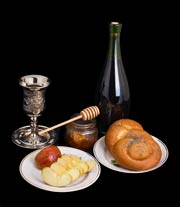
The High Priest went through a complex set of sacrifices to atone for his own sins and the sins of all the people. A goat was then led to die outside the walls of the city - symbolically taking the sins of the people with it. The High Priest was then able to enter the Holy of Holies, sprinkling blood on the Ark of the Covenant. It was by no means certain that he would come out alive. A rope was tied around his legs so he could be pulled out if he should die.
If he lived, he would go outside, lift his hands and pronounce the Aaronic blessing on the people - the only time in the year anyone would invoke the unutterable name of God (Y-H-V-H).
The word atonement means "cover". This offering "covered" the sins of the people. None of these offerings "took away" those sins until the great sacrifice on Calvary was made by Christ. Hewas sentenced by the High Priest who said, prophetically, that it was good that one man should die for the nation. Jesus was led outside the walls to bear the sins of all the people of theworld.
When the Temple was destroyed by the Babylonians, and again by the Romans, there was no longer a Holy of Holies, a High Priest or a sacrificial system. The Jewish people had to find anothermeans of atonement and they resort to prayer and good deeds.
Today, the Day of Atonement is spent in the Synogogue, in repentance, fasting and prayer - asking to be written in the Book of Life for one more year.
In modern Israel, nothing moves on Yom Kippur. One can walk down the centre of the highways, without fear of being hit by a car because there are no vehicles. It is an awesome day.
This day, or any day is a good time to approach our Holy God with reverence He deserves. Repent of our sins and thank Him for His Son's sacrifice that brings us into continual onenesswith our Maker and allowing our names to be recorded forever in the Lamb's Book of Life.
(Scripture References: Lev 16:29-34, 23:26-32, Heb 9:11-14, 22-24, 10: 1-25)
The Feast of Tabernacles or Booths (Succot)
Date in Hebrew calender is 15th - 21st of Tishri (September - October).
This was the last feast of the year. It was the happiest and the only feast in which they were commanded to rejoice. It celebrated the final harvest of the year and God's great provision for His people.
During the feast, they were required to leave the comfort of their homes and live in booths, made of palm and willow trees, a three-sided temporary structures with leafy roofs through which the stars could be seen. In this way they could remember and identify how their forefathers lived in tents or booths when they came out of slavery in Egypt.
In New Testament times, Succot was a major celebration, often referred to simply as "Feasts." It incorporated great ceremonies using water and light. When Jesus (Yeshua) made hisproclamation in the temple during Succoth, "In the last day of the great feast, Jesus stood and cried saying, If any man be thirst, let him come unto me and drink. He that believeth on me,as the scripture hath said, out of his belly shall flow rivers of living water." He was challenging the system in a relevant and pointed way.
Today, Jewish families start building and decorating their "booths" right after Yom Kippur, in their yards or on their balconies. They spend as much time there as possible, almost always taking the evening meal together under the leafy roof and the stars of God's glorious creation.
Prophet Zechariah says that, in the Millennium, all nations will come up to Jerusalem for the Feast of Tabernacles, or incur God's wrath.
The ultimate fulfillment of this feast will come after the return of the Lord, when God will once again dwell, or "tabernacle" with His people.
(Scripture References : Duet.16:13-15; Zech.14:16-19; John 7:2-52)
Feast of Dedication (Chanuka)
Date in Hebrew calender is 25th of Kislev to 2nd of Tevet (November - December).
The word Chanuka means dedication. It is a celebration of God's faithfullness and deliverance. The events took place during the intertestamental period, in approximately 165B.C. Over 100 years earlier Alexander the Great had conquered the entire ancient world of the Eastern Mediterranean. Upon his early death, four of his generals divided up the empire. The areaof Judea eventually came under the control of Antiochus IV "Epiphanes."
Antiochus tried to force the Jews to accept Greek culture, even defiling their temple by sacrificing a pig on the altar and erecting a statue of Zeus in the Holy of Holies! This was the "Abomination of desolation" and was prophesied by Daniel (11:31-32).
Finally, the Jews revolted. Although greatly outnumbered and overpowered, they fought a courageous guerrilla war and drove out the Greeks in 165B.C., re-entering the city and temple.
There was only enough of the special oil buried in the temple menorah to last only one day, and it would take 8 days to make more. Nevertheless, they lit the menorah and the oil miraculously burned for 8 days while more was being prepared.
Thus began the Feast of Dedication to celebrate this miracle, the great deliverance from oppressors and the dedication of the newly cleansed temple.
Jesus went to Jerusalem for the Feast of Dedication, and while in the temple area He proclaimed His divinity - "I and the Father are one".
Today Chanukah is celebrated with a 9 branched candelabra. Eight of them recall the eight days the oil miraculously burned, while the 9th is the "Servant" candle used to light theothers. Each evening during the eight day feast, more of the eight candles are lit, one the first night, two the second night, etc until all eight, plus the servant, are brightly burning in the homes of all Jews on the last night. It is also called the "Festival of Lights" and is often accompanied by the exchanging of gifts.
Chanukah celebrates one of many deliverances of the Jewish people from those who want to try again and again to destroy God's Covenant people. In recent history we have two horribleexamples of this - the pogroms in Russia, and the Holocust. Yet, the Lord's people are alive today, and back in their own land against unbelievable odds.
But the enemy has not given up and he is trying and will try to destroy them again. Pray for God to deliver His people again and to breathe His Spirit into their revived bodies fully restoring them to Himself.
(Scirpture References : Daniel 8:22-25, 11:20-45; John 10: 22-42)
The Feast of Purim
Date in Hebrew Calender is 14th and 15th of Adar (February - March).
This feast commemorates the deliverance of the Jewish people from destruction by an evil schemer , the Prime Minister of Persia , named Haman during the days of their captivity by the Persians.
Through the great courage of the Jewish Queen Esther, and the wisdom of her cousin Mordecai, the scheme came to naught and the Jewish people were delivered from destruction.
A two day holiday was instituted to commemorate this event.
Even though God is not mentioned in this book, clearly His hand can be seen in the many miraculous twists of the story.
Today, Purim is celebrated in Jewish homes and schools by children dressing up. The book of Esther is read and re-enacted. It is a joyous and light hearted event, but recallsgreat danger, great deliverance and the great faithfullness of the God of Abraham, Jacob and Isaac toward those who trust in Him.
(Scripture Reference: Esther 9:20-22)
The Sabbatical Year
This was the year of meditation and devotion.
This was done every seven years. God wanted to impress upon the people that the very land was holy to Him. There was quiet over the whole land during these days. Every day was like the Sabbath and the minds of the people were kept on the things of God. The Law was read. This time exerted a tremendous influence upon the lives of the people.
The Year of Jubilee
Celebrated every 50th year.
It was inaugurated on the Day of Atonement with the blowing of trumpets or the Ram's Horn. As in the sabbatic year the land was not cultivated.
The Year of Jubilee was a special year in family renewal. All slaves of Hebrew blood was freed, the blowing of the trumpets that urshered in the year released every bondman. Jewish writerstell us that the year of jubilee was observed at the time of the fall of Judah in 586 B.C. References are made to it in Isaiah 5:7-10, 61:1-2, Ezekiel 7:12-13,46:16-18.
Another outstanding event was the restoration of houses and land return to the original owner. If they were not redeemed within a year, however, they became the permanent possession of the previous owner. The land owned by Levites (priestly descendant) was exempted from this law; they could redeem their land at any time.
The rights and privileges extended by the Israelites to other Israelites did not extend to non-Israelites. Servants obtained by Israelites from the non-Israelite world were permanent slaves. And property purchased from non Israelites was not redeemable. The law of the Year of Jubilee favored the Israelites.
Jeremiah 34:8, 14-17 warned Judah for first practicing the Jubilee and then taking away people’s liberty. Apparently, those who gained wealth and power in Israel did not observe this festival willingly.
The book of Leviticus shows how God is to be approached and worshipped. So if you are desiring to know how to worship , why not invest your time in studying the book of Leviticus.We know that only through the blood of Christ can we have access to a Holy God.
God commands us to be holy, which only Christ can give, for He is our Holiness.
In Genesis we see man ruined.
In Exodus, man redeemed.
In Leviticus, man worshipping.
Did you know that the number SEVEN is a significant number in the book of Leviticus.
- Every seventh day was the Sabbath.
- Every seventh year was the sabbatic year.
- Every seven times seven years was followed by a year of Jubilee.
- Pentecost was seven weeks after Passover.
- In the seventh month were the feasts of trumpets, tabernacles and atonement.
- Pentecost lasted seven days.
- Passover lasted seven days.
This interesting book, like Revelation, is built around a series of seven.
Return From the Feasts of the Lord to Hebrew Music
Christian Sheet Music Download
All christian lyrics are the
property and copyright of their owners, and
are provided here
for educational purposes only.



